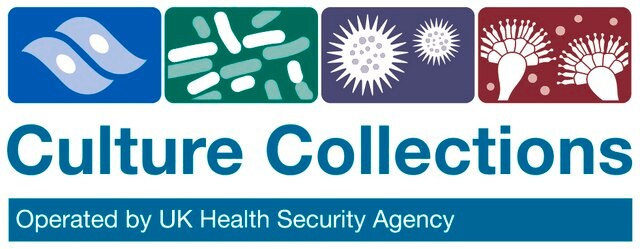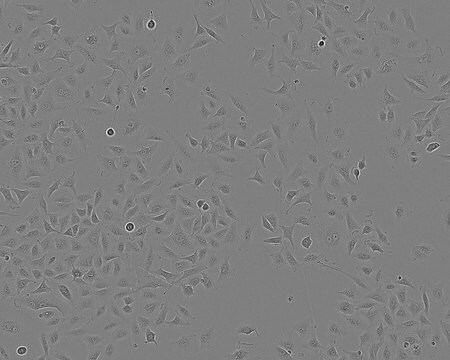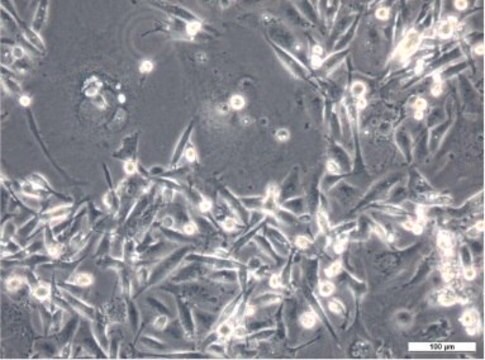推荐产品
产品名称
OE33 Cell Line human, 96070808, Caucasian esophageal carcinoma
生物源
human esophagus
增長模式
Adherent
染色體組型
Aneuploid
形態學
Epithelial
產品
Not specified
受體
MHC class I, ICAM-1
技術
cell culture | mammalian: suitable
相關疾病
cancer
運輸包裝
dry ice
儲存溫度
−196°C
細胞系來源
Human Caucasian oesophageal carcinoma
細胞系描述
The cell line OE33, also known as JROECL33, was established from the adenocarcinoma of the lower oesophagus (Barrett′s metaplasia) of a 73 year old female patient. The tumour was identified as pathological stage IIA (UICC) and showed poor differentiation. OE33 express HLA-A, -B and -C antigens (MHC class I) and ICAM-1 constitutively. Expression of HLA-DR (MHC class II) can be induced by treatment with interferon-gamma. The cells express epithelial cytokeratins and are tumourigenic in nude mice.
應用
OE33 cell line has been used to study the effect of microRNA-MiR-193b on autophagy and cell death on these cells. It has also been used to study the sensitivity of the cells to anti-c-Met monoclonal antibody ABT-700.
Study of oesophageal cancer
例行更新培養
Split sub-confluent cultures (70-80%) 1:8 i.e. seeding at 1x10,000 cells/cm2 using 0.25% Trypsin or Trypsin/EDTA; 5% CO2; 37°C. Initially these cells grow slowly and can take up to 7 days until ready for the next split, 50% media changes will be necessary every 2-3 days (i.e. replacing half the old medium with fresh).
其他說明
Additional freight & handling charges may be applicable for Asia-Pacific shipments. Please check with your local Customer Service representative for more information.
我们的科学家团队拥有各种研究领域经验,包括生命科学、材料科学、化学合成、色谱、分析及许多其他领域.
联系技术服务部门


